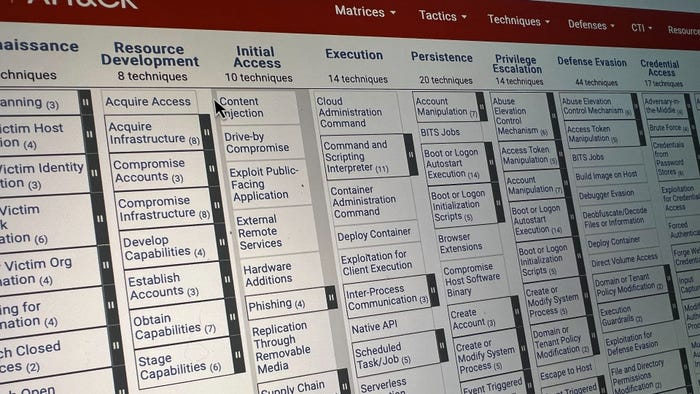Insider Threat Damage Balloons as Visibility Gaps WidenInsider Threat Damage Balloons as Visibility Gaps Widen
A growing number of organizations are taking longer to get back on their feet after an attack, and they're paying high price tags to do so — up to $2M or more.
October 4, 2024

Organizations are seeing staggering increases in cyberattacks that stem from insider threats, with price tags for remediation reaching eyewatering heights of up to $2 million per incident.
According to research from Gurucul — which surveyed more than 400 IT and cybersecurity professionals — organizations are seeing a rising tide when it comes to insider threats. In 2023, 60% of organizations reported insider attacks, but in 2024 this number jumped to 83%. And in a dramatic shift, the number of organizations experiencing six to 10 attacks in the year doubled from 13% to 25%. Overall, almost half of organizations in the Gurucul study said that the occurrence of inside attacks has become more frequent over the past 12 months.
"Cybersecurity professionals define insider threats as risks originating from individuals within an organization who have authorized access to systems and data but misuse that access, either maliciously or unintentionally," Jason Soroko, senior fellow at Sectigo, wrote in an emailed statement to Dark Reading. "This definition encompasses employees, contractors, or partners who, due to complex IT environments, hybrid work models, or the adoption of advanced tools like GenAI, might exploit vulnerabilities."
This could mean a situation in which an employee steals sensitive data, accidentally leaking data after falling for a phishing scam, or ignoring security updates and protocols, ultimately leading to a security breach, he added.
The Gurucul researchers found that the biggest driver of insider attacks are the growing IT complexities that organizations are faced with, which create visibility gaps that are hard to close. Technology is becoming more complex, and more employees are accessing system networks, extending the attack surface and making it more difficult to cybersecurity staff to safeguard. Not just this, but the adoption of new technologies like Internet of Things (IoT), artificial intelligence (AI), cloud services, and software-as-a-service (SaaS) applications play a role as well in the rapid growth rate that is difficult for organizations to keep pace with.
With the implementation of new technology, these added "layers of complexity" create challenges for existing staff to combat threats, causing IT staff to become overworked and burned out. Nearly 30% of respondents noted that there is insufficient staff to implement and maintain tools and, if there are enough employees to go around, many lack the training and expertise to effectively manage the tools to safeguard networks. The researchers recommended that organizations that struggle with this cut their losses and transition to more intuitive tools that "reduce alert triage and false positives by providing a complete case of evidence with context and advanced behavior analytics."
Gurucul also pointed out that gaps in insider risk management are also to blame. "Weak enforcement policies, including a lack of consequences for employees and insufficient monitoring, were identified by 31% as contributing factors," according to the report. A fifth (20%) of respondents also cited executive management and policy issues as being one of the major obstacles to combating insider threats and implementing effective management tools and strategies.
Ultimately, it's a story that many in the cybersecurity industry have heard before: Executives need to give cyber threats the attention they deserve and support policy frameworks to help combat it; enforcing this mentality on a companywide level is also essential to strengthen mitigation.
From Insider Attacks to Financial Spiral
Insider attacks don't just compromise an organization's safety and information — they come with a high price tag, too.
According to the study, after dealing with an attack of this kind, the cost of remediation for many organizations (32%) ranges from $100,000 to $499,000. And for others, it’s even more costly: 27% of organizations estimate the cost of remediation to range between $500,000 to $1 million, while 21% say that the costs range from $1 million to $2 million.
And that's just the financial impact for each individual insider attack an enterprise faces. With many experiencing roughly six to 10 attacks a year, these numbers multiply to a price that is likely just too costly to cough up.
Those high price tags usually add up due to a variety of activities, such as system restoration, data recovery, legal fees, regulatory fines, and reputational damage control.
And even if organizations can put money into remediation, their recovery is still slow. Roughly 45% of organizations take a week or longer to get back on their feet after an insider attack. The lengthy recovery time is usually due to the technical challenges that cybersecurity teams face when trying to restore intricate systems, a lack of unified visibility, and siloed security tools. Limited resources, regulatory compliances, and ongoing investigations also play a role in dragging out remediation efforts, keeping companies down while they’re most vulnerable.
"It's essential for organizations to leverage advanced incident-response solutions that go beyond basic automation," according to the Gurucul researchers. "These solutions integrate dynamic risk-based prioritization, machine learning, and comprehensive contextual analysis to ensure that security teams can focus on the most critical threats, thereby reducing recovery times."
But in the end, prevention is better than reaction: That means educating existing employees (who complain of technical challenges, limited resources, compliance and privacy concerns, among other issues as leading to inadvertent mistakes), while also bringing in new cybersecurity talent so that security teams can effectively do their jobs and safeguard and mitigate against threats.
"Investing in ongoing training and development for cybersecurity teams to build the necessary expertise is crucial to address this challenge," the researchers wrote. "Managed security services can supplement internal capabilities, ensuring that tools are effectively implemented and maintained without overburdening existing staff."
About the Author
You May Also Like




